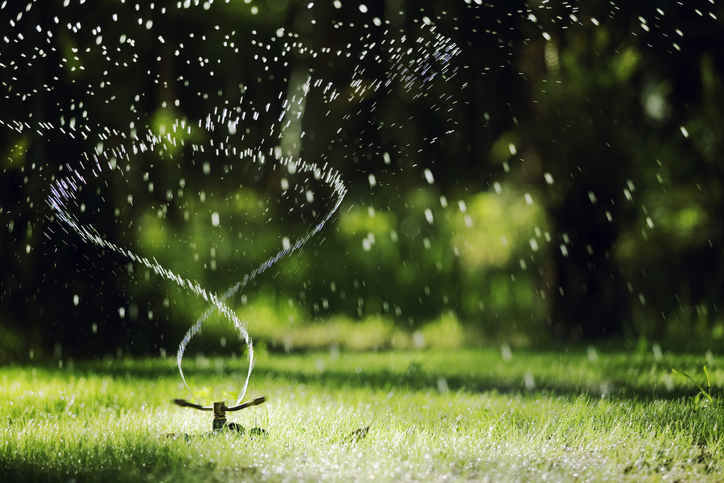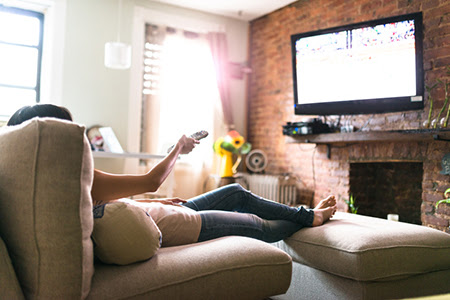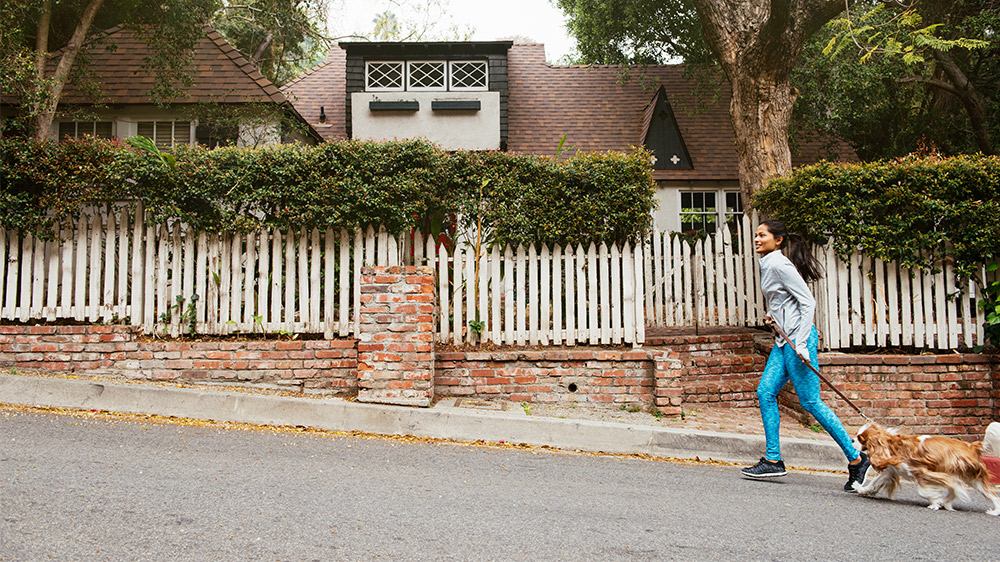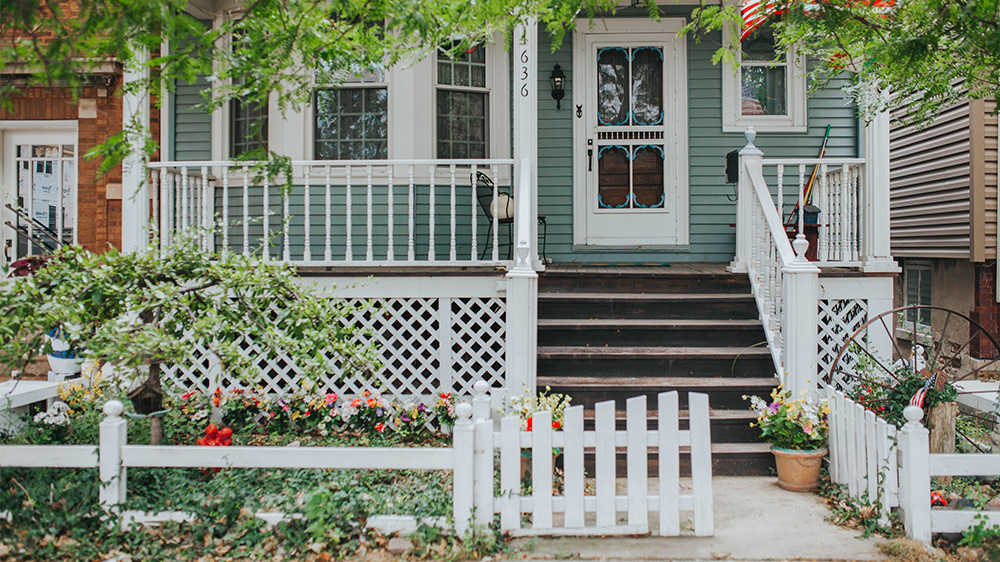Steering clear of homebuyer’s remorse requires more than just picking the right home in the right neighborhood. According to a 2016 survey by J.D. Power, 27% of new homeowners ultimately came to regret their choice of lender. One major reason for the dissatisfaction was overall poor customer experience, including lack of communication and unmet expectations. Another factor? Pressure from the lender to choose a particular product or loan. You can remove some of the tension and turmoil of house-hunting by carefully vetting potential lenders. Here are some questions to ask potential lenders before you commit.
Are You Making These 5 Lawn Watering Mistakes?


Ahhhh, the sweet smell of cut grass in the air…a true harbinger of summertime. Keeping that lawn green can be tricky without these great tips on watering!
Proper watering nourishes lawns, just as proper hydration nourishes our bodies. Yet too many of us are failing at both. We’re not going to lecture you about drinking more water, well leave that to your doctor or significant other. But we are going to give you a lesson about correctly watering your lawn.
Here are five lawn-watering mistakes that you’re likely making right now and ways you can fix those mistakes.
1. You’re over-watering your lawn.
Many homeowners drench their lawns with water. However, that’s not a wise move. Over-watering can leave your lawn susceptible to fungus and other diseases. It also can cause your lawn to grow too quickly and can wash away costly fertilizers, according to PlantCareToday.com. In addition, drowning your lawn wastes water.
To avoid excessive watering, PlantCareToday.com recommends buying a soil moisture meter. These meters are very simple and valuable tools that you can pick up for $10 or so at any garden center or home store, the website says.
Lawn care experts say most lawns need one inch of water per week. However, that’s merely a rule of (green) thumb, as watering requirements vary according to grass type, climate and seasonal changes. The amount of water required for an established lawn will be determined by its overall health, beauty, and ability to withstand use and drought, says Turfgrass Producers International, a trade group for sod growers.
Related: Spring Lawn Care Tips You Can Do Now
2. You’re under-watering your new lawn.
While your existing lawn may be getting too much water, your newly planted lawn may not be getting enough. Bayer Advanced, a maker of lawn and garden chemicals, says a new lawn is in a critical stage during its first year. Don’t rely solely on rainfall to establish a healthy, deep root system provide supplemental irrigation during the first year of growth, Bayer Advanced suggests.
How much irrigation you do depends on factors such as the type of grass and the climate.
3. You’re not monitoring your irrigation system.
If you’ve set up an automatically timed irrigation system to water your lawn, don’t put it on autopilot.
Irrigation timers are not set it and forget it devices, says Lee Miller, a turf pathologist at University of Missouri Extension. You’re not cooking turkey for Thanksgiving dinner. Sprinklers should be adjusted according to precipitation events.
For instance, if it’s been steadily raining the past two days, your sprinkler system should be off for a while afterward. The San Diego County Water Authority recommends turning off the sprinklers for two weeks after significant rainfall. After a storm, do not begin watering again until the top 1 to 2 inches of soil are dry. Lawns that lose their lush green luster will rejuvenate with the next rain, says Jeff Stephenson, principal water resources specialist at the San Diego Water Authority.
Researchers at Kansas State University found that 65 – 83 percent of homeowners surveyed in three Kansas cities didn’t know how much water their lawn irrigation systems had applied.
In reality, deep and infrequent irrigation makes for deeper root systems, UM’s Miller says.
4. You’re watering your lawn at the wrong time.
The worst time to water your lawn is when you’re probably sound asleep. Watering after dark soaks the lawn overnight; a soggy lawn invites fungus and other diseases to invade your grass.
When’s the best time to water your lawn? Experts says it’s around 4-8 a.m., before many of us have sipped our first cup of coffee.
Watering the lawn early in the morning gives it a good supply of water to survive the heat of the day, according to University of Illinois Extension. Early morning also tends to be when wind speeds are lower and, therefore, when water evaporation is less likely to occur.
5. You’re assuming that you’ve got to water brown grass.
When your lawn is brown, you might think it’s parched. However, it may simply have gone dormant during hot weather or drought conditions. Dormancy is simply a state of reduced water usage where the turfgrass … focuses resources on the roots, the Lawn Institute says. Dormant turfgrass will turn brown and is often considered unsightly, but it will recover when conditions improve.
In other words, brown grass doesn’t necessarily equal dying grass.
The institute says summer dormancy is a normal response to heat and drought, and most lawns can stay dormant for at least three to four weeks without dying.
During the summer, the worst that will happen if lawns are not watered is that weaker parts of the lawn or areas in hot spots will die, according to the Oregon State University Extension Service. When fall returns, lawns can be reseeded and will recover just fine over the winter.
Source: RisMedia’s Housecall
How to Get a Better Deal on TV Service Without Cutting the Cord


Like it or not, television access can be expensive. Especially with the limited time only offers once they adjust upward (why do they never adjust downward??) Take a look:
Although the idea of cutting the cord on expensive cable or satellite TV costs sounds amazingly liberating, the unfortunate truth is that this would mean losing access to some of your favorite shows and channels. Even if you could find most of your shows on Netflix, could you really stand to wait several additional months to find out what’s happening on Jane the Virgin or New Girl? If not, there’s still a way to cut the cost of your current TV service without cutting the cord.
Here are five simple steps you can take to negotiate with your current TV service provider for a lower monthly payment.
1. Get to know your current contract.
Whether we choose to admit it or not, most of us don’t fully understand the ins and outs of the contracts we sign with service providers. Ignorance might seem like bliss for a while, but when the price starts to go up after a certain period of time, you might wish you would have read the contract with your TV service provider before signing.
If you didn’t understand your contract before you signed up for service, it’s not too late to change the price! Dig into your contract and figure out what it entails. Be sure to read each detail so you won’t be surprised when the company representative you speak to brings up each stipulation. Knowing exactly what your current contract entails will help you build a stronger argument for negotiating a lower price and different terms later on.
2. Search for better deals.
The next step is to find out what kind of deals are out there that you’re not taking advantage of. All providers will run special pricing on certain packages from time to time. Finding out what deals your provider is running can help you identify a number you should negotiate for and provide proof for your negotiation.
You can use deal sites for specific providers or online coupon code aggregators to find the lowest prices offered for packages from your provider. Do a little digging on sites like these to find the lowest prices and make note of them. Be sure to save the exact URL for where you found the deals so that you can pull up all of the information you might need later on when you are speaking with your cable or satellite company.
3. Know your stuff.
Customer service representatives are more likely to win a negotiation with consumers who haven’t done their research. This is because they usually have counter arguments in their back pocket that help them get a leg up on callers.
Understand prices for specific channels and add-ons. If you have internet service through your TV service provider, brush up on average costs for the speed you’re currently paying for, and maybe even run a speed test to find out if you are actually getting the speed you’ve been promised.
Knowing enough about your TV and internet service to have an informed conversation with your provider will help you come in with a stronger argument for a lower rate—not to mention, you might find out that you’re actually overpaying for a specific package or speed you’re currently getting, which will give you another bargaining chip.
4. Pick up the phone.
This tip is simple, but also arguably one of the most important parts of negotiating for a lower monthly bill: pick up the phone. It might be easier and perhaps more efficient to send an email or engage in an online chat with a representative, but your negotiation will be far stronger over the phone.
During your call, make it clear that the possibility of cancelling your account is on the table and be persistent in your request for the lowest advertised rate. Explain your situation and let the representative know that you will need a bill reduction in order to keep your account open. They will likely try to offer you some freebies like free HBO for a few months or a year of the NFL Sunday Ticket, but don’t let up. Keep your eye on the prize of negotiating for a lower monthly bill, as this will be more valuable to you in the long run.
5. Solidify your agreement.
Once you’ve come to an agreement with your TV service provider, don’t just assume that your next bill will reflect the changes you’ve requested. Ask for a specific date for when this will go into effect and review the terms you’ve agreed upon one more time. Be sure to write these terms down so that you have a crystal-clear understanding of what your contract entails before you hang up.
To be extra sure your lower rate has been settled, financial pros recommend calling back to speak with a different representative to make sure they also see the changes that have been made to your account.
Few things are more frustrating than paying large bills at the end of the month. Although the hefty cable or satellite bill you’re currently getting at the end of the month might make cutting the cord seem more appealing, you don’t have to cut ties with your favorite programming to lower the bill. Hopefully this five-step process can help you pick up the negotiating skills you need to see a nice reduction on your next cable bill.
Source: RisMedia
5 Signs Of A Dog-Friendly Neighborhood


Where would be without our PUPPIES!! They are family members too. Looking for a dog friendly neighborhood? Here’s how:
Look for these puppy-friendly factors before making your move.
With more than 36% of U.S. households including a dog (according to a 2012 survey from the American Veterinary Medical Foundation), it’s no surprise that finding a pet-friendly neighborhood is an important consideration for many homebuyers. But how can you tell which neighborhoods are truly welcoming to your four-legged friends? Here’s what to look for on the house hunt.
-
1. You see a lot of dogs out and about
An obvious sign of a pet-friendly neighborhood is one that has lots of dogs exploring with their humans. You want to make sure that people, neighbors, landlords, and business owners are going to welcome your pet, and the best indicator of that is if there are lots of other dogs around, says Janine Acquafredda, co-founder of Realtors 4 Rescues, a nonprofit that helps keep animals out of shelters. And where there are lots of dogs, there are lots of dog owners that care about animals, so your dog will be in a safer and happier environment. There’s more to this pet activity than just scoping out the canine social scene, though. A neighborhood with lots of dog activity is also much more likely to have dog-loving neighbors and those nearby dog-lovers are much more likely to help you find your pup if he ever gets loose or runs away.
-
2. There’s a nearby dog park and the dogs playing in it look happy and relaxed
Not all dog parks are created equal, and you want to be sure the one near your future home will be a pleasant experience for your pooch. Read: the big dogs aren’t picking on the little guys. (For a quick scan of nearby green spaces your dog might enjoy, check out Trulia Maps and the Places to Play layer.) Visit on a weekend morning, when the park is likely to be crowded, says Amy Robinson, a dog trainer and dog expert in Vero Beach, FL. Observe the owners too. Are they watching their charges or chatting and drinking coffee while their dog is a hundred yards away? How clean is the place? Are people picking up after their dogs? All of these answers will give you an idea of what type of dog and owner frequent the park, she says. Bonus: Hanging at the dog park can help you make friends in your new neighborhood.
-
3. You can easily find an animal shelter, veterinarian, and pet supply store
The existence of all three essentials shows that the community cares about the well being of animals, says Ashley Jacobs, CEO of Sitting For A Cause, a site that matches pet owners with local petsitters. When you have a community who cares about animals, keeping them healthy and controlling the pet population, that’s always a telltale sign that your dog will be welcome and loved, she says.
-
4. There are plenty of sidewalks and places to walk
We bought our house because of the size of the lot .98 acres for the dogs, says Peter Taylor, a photographer who has three dogs and lives in Mountainbrook, a neighborhood in Charlotte, NC. And the roads are wide, with very little through traffic, great for walking. After all, you’ll walk your dog often, so you’ll want a neighborhood that makes this accessible. In addition to sidewalks, are there trails or beaches to explore? Bonus points if the neighborhood provides waste bags or dog-accessible water bowls, which are a sure sign an area welcomes pooches, says Jacobs.
-
5. Places for people also welcome pets
If a neighborhood looks promising, call or stop by some of the local restaurants, stores, or coffeehouses and ask about their policy on pets. Look for dogs lounging on local restaurant patios while their human family members enjoy lunch or dinner nearby. Spotting dog treats on the counter at the neighborhood bakery or brewery is a good sign. These little extras will enhance the quality of life for you and your pet and make your new neighborhood feel like home.
Source: Trulia Blog
How To Open Your Pool

With the hot days of the season upon us, its time to dive in! First things first…here is a helpful how to list on opening your pool.
Spring is in full bloom and this can mean a lot of things for many different people. For example, if you own a pool you’re surely thinking (probably dreading) about opening it for the season. There is nothing like watching all your loved ones enjoying its crisp coolness but they don’t know how much work goes into getting it ready. I am here to bring optimism to the equation and tell you that opening your pool doesn’t have to be as horrible as you anticipate.
I came across this great article from Popular Mechanics that will definitely help guide you in your efforts. I’ve highlighted a couple of steps below.
1) Don’t Empty Your Pool
According to the article, you should never have to completely empty your pool of the water that had been sitting from the past season. Exceptions to this include if you neglected to cover it or if you need to do any actual construction work to it. Why you ask? Apparently, if you remove all of the water you could run the risk of your pool lifting since it doesn’t have the weight of the water to hold it down. What that ultimately might result in is you needed to replace the whole thing.
2) Cleaning Your Pool and Water
The most basic way to start cleaning your pool and its water is by buying a chemical opening kit, or by shocking it. Then, change all the filtration systems and clear all of the baskets. You should also take this time to remove any plugs you may have put in place last year. During this step you should still have your pool cover on.
3) Refilling Your Pool
If your pool is running low on water, feel free to top it off at this time. However, this should only be done after you have replaced your filters. Once your pool is filled to the desired amount, you can take a sample to your local pool store where they will test it for you. Some places do it for free, but if not, don’t skip this step because it is super important to make sure your water is swim ready otherwise it could be dangerous.
4) Get Ready for Fun in the Sun
Your pool’s filter should be cleaned daily until the water appears clear. A ready pool means that you can see the bottom without any issues. You may need to continuously add chlorine to help you reach the perfect balance.
5) Dive In
Once the water is completely clear and all of the water levels are good you can take off the cover. Taking it off any sooner may prove counterproductive as debris may disrupt your process. Once you’ve gotten to this point, invite the neighborhood (well maybe not the whole neighborhood) and enjoy your summer!
Its that time again! Hot summer days are upon us and its time to dive in! First things first though…time to open that pool up!
The sun is shining and the swimming pool season is about to kick off. Here is a guide to help you open your pool for the season.
Spring is in full bloom and this can mean a lot of things for many different people. For example, if you own a pool you’re surely thinking (probably dreading) about opening it for the season. There is nothing like watching all your loved ones enjoying its crisp coolness but they don’t know how much work goes into getting it ready. I am here to bring optimism to the equation and tell you that opening your pool doesn’t have to be as horrible as you anticipate. I came across this great article from Popular Mechanics that will definitely help guide you in your efforts. I’ve highlighted a couple of steps below.
1) Don’t Empty Your Pool
According to the article, you should never have to completely empty your pool of the water that had been sitting from the past season. Exceptions to this include if you neglected to cover it or if you need to do any actual construction work to it. Why you ask? Apparently, if you remove all of the water you could run the risk of your pool lifting since it doesn’t have the weight of the water to hold it down. What that ultimately might result in is you needed to replace the whole thing.
2) Cleaning Your Pool and Water
The most basic way to start cleaning your pool and its water is by buying a chemical opening kit, or by shocking it. Then, change all the filtration systems and clear all of the baskets. You should also take this time to remove any plugs you may have put in place last year. During this step you should still have your pool cover on.

3) Refilling Your Pool
If your pool is running low on water, feel free to top it off at this time. However, this should only be done after you have replaced your filters. Once your pool is filled to the desired amount, you can take a sample to your local pool store where they will test it for you. Some places do it for free, but if not, don’t skip this step because it is super important to make sure your water is swim ready otherwise it could be dangerous.
4) Get Ready for Fun in the Sun
Your pool’s filter should be cleaned daily until the water appears clear. A ready pool means that you can see the bottom without any issues. You may need to continuously add chlorine to help you reach the perfect balance.

5) Dive In
Once the water is completely clear and all of the water levels are good you can take off the cover. Taking it off any sooner may prove counterproductive as debris may disrupt your process. Once you’ve gotten to this point, invite the neighborhood (well maybe not the whole neighborhood) and enjoy your summer!

 Facebook
Facebook
 X
X
 Pinterest
Pinterest
 Copy Link
Copy Link


















